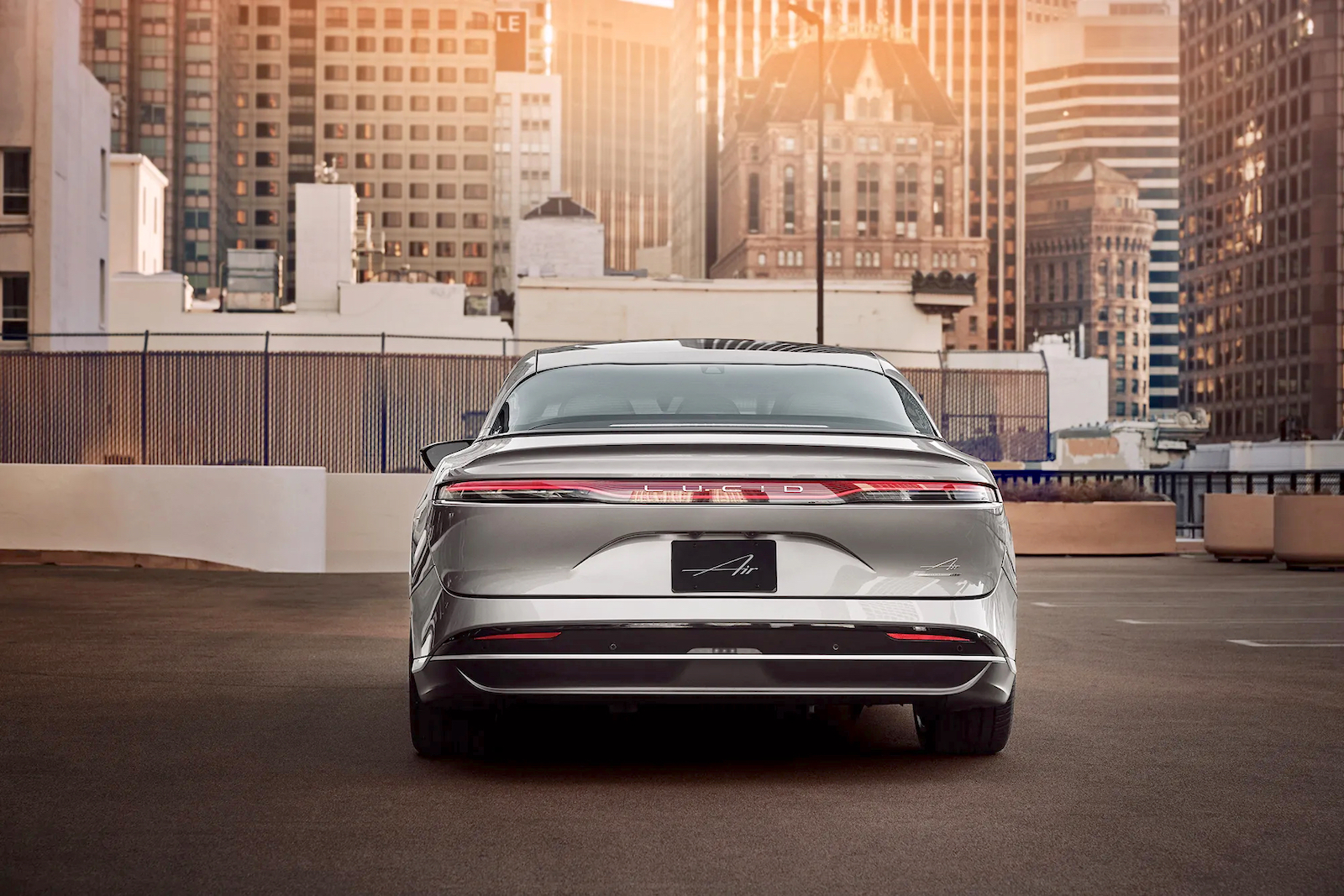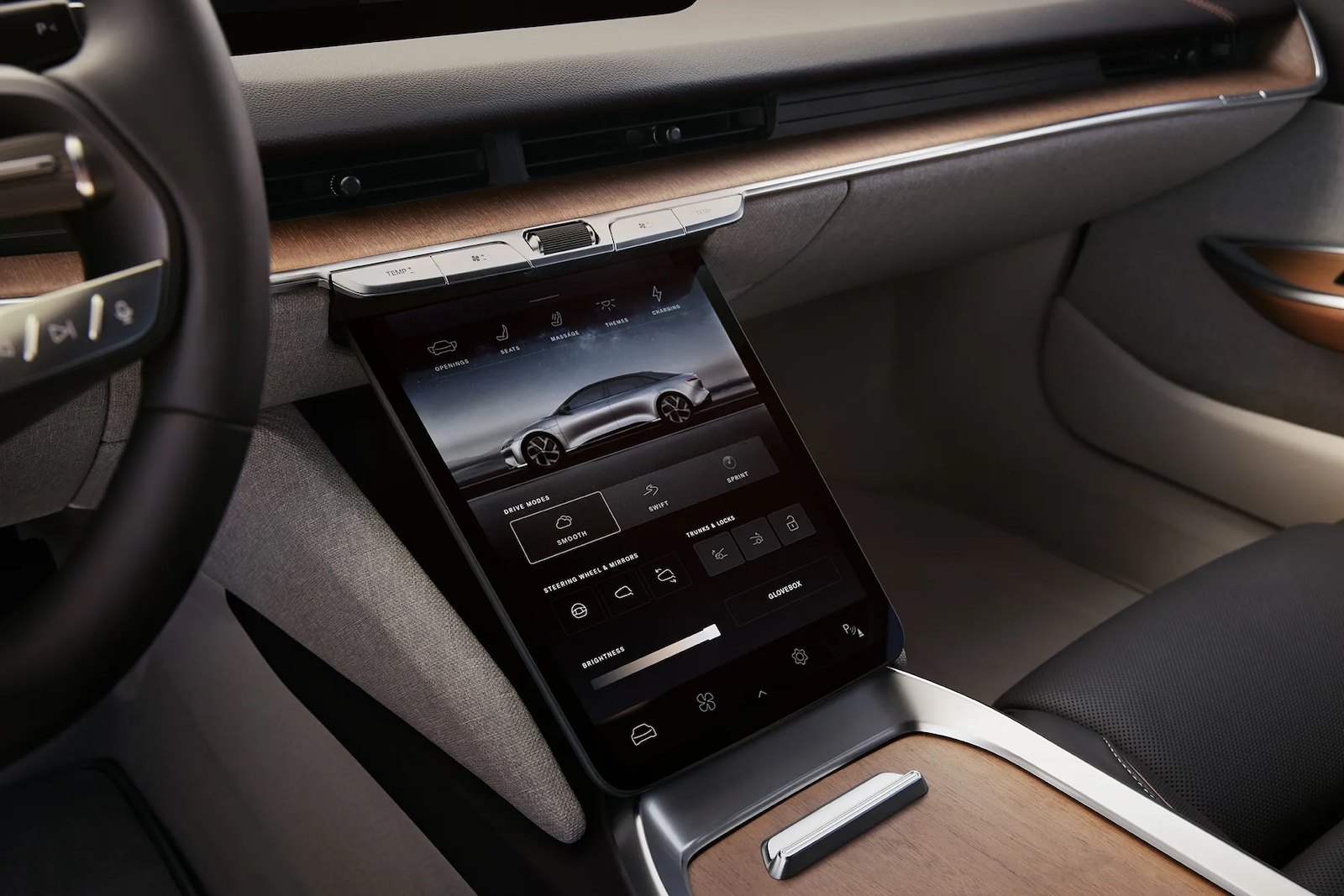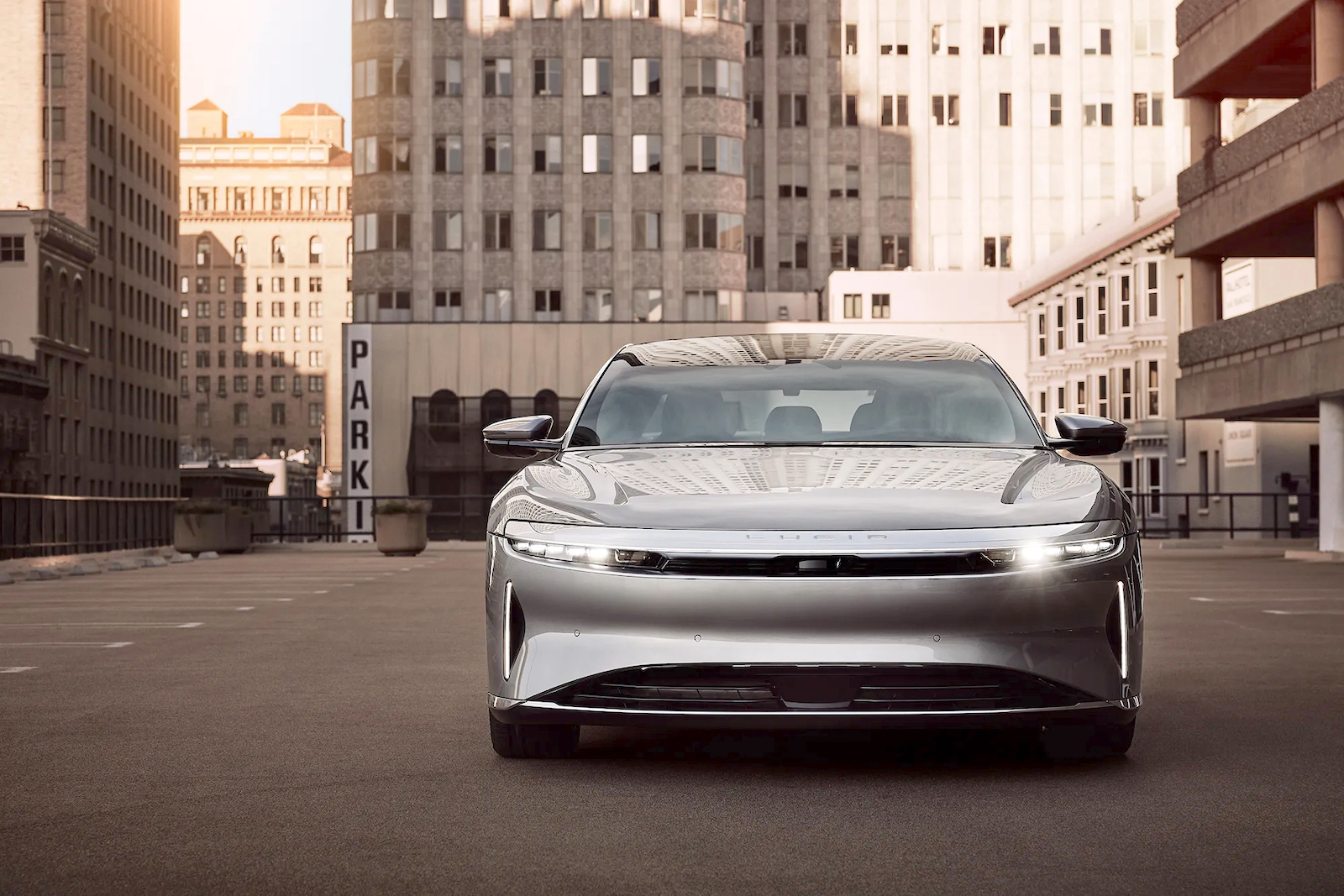Ever since Tesla first burst onto the scene more than a decade ago, a flock of wannabe EV startups has followed. Only a handful have so far made it into production, with Lucid one of the more intriguing. It helps that the California-based brand’s CEO and chief technology officer, Peter Rawlinson, previously served as chief engineer on the Tesla Model S.
Though Lucid is now working up its first all-electric SUV, dubbed Gravity, the startup chose to debut with a much more striking sport sedan, Rawlinson telling Headlight.News his goal was to put a visual halo around the brand, much as Tesla did with the Model S.
There are other similarities. The Lucid Air boasts a striking exterior design, a roomy cabin benefiting from the layout of an electric drivetrain, cutting edge technology and standout performance. And like the Model S, Lucid’s flagship is available in an expanding array of trims, from the “entry” Pure model to the blindingly quick Sapphire package. At this point, I’ve had the chance to drive three different variants, but my most recent — and longest — experience afforded me a full week behind the wheel of the Lucid Air Touring.

If you’re desperate to get into a Lucid, but must cope with a tight budget, the Pure starts at “just” $82,400. It’s not a bad option but, if you’re investing that much, the Air Touring, at $95,000, is worth stretching for.
Affordable — sort of
Once again, Lucid tore a page out of the Tesla playbook, opting to not only go with a distinctive sedan for its first entry, but to target the luxury market. It’s initial entry, the Air Dream (available in Performance and Long-Range options) currently run around $179,000. And the 1,234-horsepower Sapphire just going on sale commands an even more exotic $249,000.
If you’re desperate to get into a Lucid, but must cope with a tight budget, the Pure starts at “just” $82,400. It’s not a bad option but, if you’re investing that much, the Air Touring, at $95,000, is worth stretching for. It brings the additional features and improved performance that truly show off what Rawlinson and his product development team have accomplished.
A risky decision
Going with a high-price sport sedan for Lucid’s first entry might once have made perfect sense, establishing the bar that the brand hopes to be measured by. It’s a debatable move today, in a world dominated by SUVs — and the resultant low sales certainly have contributed to Lucid’s financial problems. That said, it really does offer a clear sense of what Lucid is capable of, starting with its design.
While aggressively streamlined — critical to maximizing range and performance — it’s no Prius. The Lucid Air Touring is handsome and elegant, clearly declaring you’ve arrived, much like more traditional premium sedans such as the Mercedes-Benz Model S.
As with most new EVs, it abandons the conventional grille. There’s no need for one since the drivetrain, including motors and batteries have been moved into the sedan’s skateboard-like platform. Under the power-operated hood there’s a modest-sized front trunk, or frunk. Instead of a grille, there’s an LED light bar stretching corner-to-corner, with slit-like LED head, turn and running lamps underneath.

The Lucid Air Touring is handsome and elegant, clearly declaring you’ve arrived, much like more traditional premium sedans such as the Mercedes-Benz Model S.
The sedan boasts a coke bottle sweep to its silhouette, and the flowing roofline adopts a distinctive silver tone to contrast with the body’s paint scheme. The roof flows well into the back deck but does create a bit of a compromise by limiting access to the deep trunk.
Almost al fresco
One of Air’s most distinctive features is the optional, near all-glass roof that creates the feeling of driving in the open, especially if the windows are down. The downside is that it can get a bit blinding, depending upon where the sun sits at any moment, and, despite the reflective coating used on the glass, the cabin can get hot on summer days. There is the alternative metal roof many buyers will likely go with.
The low and flowing roofline does result in another compromise. You’ll have to duck a bit to climb into and out of the cabin, especially if you’re over 6 foot in height. Once inside, however, it’s positively cavernous, with rear seat room on a par with a stretched S-Class. And, with no driveshaft, there’s a completely flat load floor.
Here’s where the differences between the Lucid Air and the Tesla Model S are most apparent. Touring’s cabin has a notably more refined appearance, with elegant materials and well executed color combinations that help justify its price tag.
DreamDrive
In today’s EV world, it’s become requisite to cover the instrument panel with digital displays. If anything, Air errs on the reserved side. There’s no pillar-to-pillar Hyperscreen like you’ll find in the Mercedes-Benz EQS, just a package of smaller displays under a gently arched piece of glass that extends to the far edge of the center console. If anything, I’d have like a bit larger display for navigation.

An ipad-sized touchscreen is mounted on the center stack and, between them, these displays handle virtually all vehicle functions
Another, ipad-sized touchscreen is mounted on the center stack and, between them, these displays handle virtually all vehicle functions — with only a volume knob and a small number of controls on the steering wheel.
Here’s where I have my biggest complaint. You’ll not only have to use the touchscreens for things like climate settings, including the seat heaters, but even to adjust the steering wheel and outside mirrors. And learning how and where to find everything can be a challenge, even for those familiar with menu-driven operating systems.
The plus side is the ability to use Lucid’s voice control — that is, if you’ve set up the system which requires you to pair it to your Amazon Alexa account. Unlike most auto voice assistants, Lucid’s won’t work right out of the box.
Equally strange: Lucid has yet to integrate both Apple CarPlay and Android Auto into its vehicles.
Going Pro
There’s an amazing list of technologies built into the Touring, including a variety of advanced driver assistance systems. They complement more conventional safety technology, including plenty of airbags and a body structure designed to give crash energy out of the cabin.
You can up the ante with the optional DreamDrive Pro package. For $10,000, you get things like highway driving assist and lane centering — and Lucid eventually promises to add full hands-free driving capabilities thanks to 32 sensors already built into the vehicle. In my experience, the centering system is, at best, a work in progress. It could be grabby and then suddenly release its grip on steering. Not dangerous, but not inspiring, either.

There’s no pillar-to-pillar Hyperscreen like you’ll find in the Mercedes-Benz EQS, just a package of smaller displays under a gently arched piece of glass.
Impressive performance
Walking up the Lucid ladder, each package delivers improved range, increased performance – or both. If you want the feeling of launching off an aircraft carrier, the Sapphire has got you covered, hitting 60 in less than 2 seconds. And the Dream and Grand Touring models also deliver supercar-like acceleration.
But Tourer is no stone pony, using twin permanent magnet motors — one for each axle — collectively punching out 620 horsepower and 885 pound-feet of torque. Near-instant torque that will have you sinking deep into your seat should you slam the throttle to the floor.
The factory estimate is 3.4 seconds 0-60. I think that’s on the conservative side. Letting the teen in me come out, I challenged a number of performance cars, both at stoplights and on the freeway, and lost nary a run, including a brief sprint on the local interstate when a C-8 tried — and failed to overtake me. And it was only later I realized I was in standard, rather than the blindingly fast “Sprint” mode.
Despite its hefty, 5,203-pound mass, placing batteries and motors below the load floor also helped deliver a surprisingly nimble feel to Air Touring, especially after turning off lane centering, while I blasted through the corners on my favorite Hell, Michigan drive route.
Battery and range
Touring models rely on a 92.0-kilowatt-hour lithium-ion battery pack, down from 112 kWh in the Grand Touring trim. While you’ll sacrifice an EPA-estimated 91-mile range, it’s hard to argue with the 425 miles that you still get here — and it’s still more than you can expect with even the most efficient version of the Tesla Model S. Credit Lucid’s impressive battery and motor technology and the aero-slick Air design.
Lucid claims you’ll get up to 300 miles additional range using a public DC quick charger, and as much as 75 miles per hour using a 240-volt home charger — with quick enough chargers under ideal conditions.
The final word
There are certainly some reasons to grump about the new Lucid Air Tourer. The DreamDrive system is, at least conceptually, a nice piece of technology. But, like the lane centering system, it needs more work — and, on the plus side, it eventually will be able to be upgraded using a smartphone-style over-the-air update system.
Whatever complaints I might come up with, however, the overall driving experience is impressive. Lucid Airs, plural, are impressive in all their forms. And that’s especially true with the Touring, considering what you get for the money. It boasts a striking exterior design, a roomy, well-executed cabin, plenty of technology, and solid performance and handling.
Anyone considering a sporty EV luxury sedan should put this on their comparison list, whether checking out the Tesla Model S, Mercedes EQS or the new BMW i7.


0 Comments